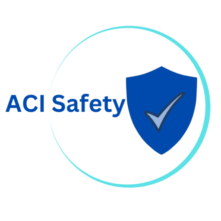Templates are brilliant. They save you time, give you structure, and help make sure you don’t forget something important.
But—and this is key—they’re only as good as the info you put into them.
If you’re using a COSHH assessment template and just copying and pasting from the Safety Data Sheet (or worse, someone else’s assessment from another company), you’re missing the point. The whole point of a COSHH assessment is that it’s tailored to your workplace, your team, and how you use a substance.
So let’s talk about how to use a template the right way. No shortcuts. No generic waffle. Just solid, practical risk control that actually protects people.
Start with a good template
Not all COSHH templates are created equal. You want one that gives you structure but still lets you describe things in your own words—not something that boxes you into vague, one-size-fits-nobody answers.
If you haven’t already got one, you can download my COSHH Assessment Template here. It’s designed specifically for small businesses, with prompts to guide you through each section clearly and practically.
Don’t just copy the SDS
This is the most common mistake I see. The Safety Data Sheet (SDS) is a useful reference—but it’s not your assessment.
The SDS tells you about the substance in general. Your COSHH assessment needs to describe how it’s used in your business.
Let’s say you’re using a cleaning chemical with a “Harmful if inhaled” warning on the SDS. That might be a big issue if you’re spraying it in an enclosed room five times a day. But if you’re wiping down a surface once a week in a well-ventilated area? Whole different story.
So yes—use the SDS to get hazard info, but always filter it through the lens of your own work environment.
Need help separating the two? This guide might help: What Should a COSHH Assessment Include?
Make it task-specific, not just product-specific
Don’t just list the chemical and say, “used for cleaning.” Instead, describe:
- Who uses it
- How often they use it
- Where they use it
- What method they use (e.g. spraying, pouring, brushing)
- Whether it’s diluted or used neat
For example:
“Maintenance staff spray degreaser onto engine parts daily inside the workshop, then wipe with cloths. Process takes 10–15 mins per use.”
That one sentence tells you far more about the risk than anything from the supplier’s SDS.
If you’re not sure how to build a full COSHH assessment from scratch, have a look at this step-by-step guide. It walks you through the whole thing using plain language.
Adapt the controls to your setup
Templates often have tick-boxes for PPE, ventilation, signage, storage… but what you tick should depend on what’s already in place and whether it’s working.
Don’t just tick “gloves” because the SDS says to. Ask yourself:
- What type of gloves?
- Are staff wearing them consistently?
- Are they the right material for the chemical?
Same goes for ventilation. If the SDS says “use in well-ventilated areas” and your staff are spraying it in a windowless cupboard, that’s not good enough.
You need to assess the actual controls—not just the ideal ones.
Include emergency info that people can actually use
Your COSHH assessment should include what to do if something goes wrong—spills, exposure, inhalation, etc.
This should come from the SDS, but again, write it in your own words.
Instead of this:
“IF IN EYES: Rinse cautiously with water for several minutes. Remove contact lenses, if present and easy to do. Continue rinsing.”
Try:
“Rinse eyes with clean water for 15 mins. Call first aider. Seek medical help if irritation continues.”
That’s far more helpful when someone’s panicking and trying to find an eyewash station.
Keep it updated (but don’t overthink it)
Once your template is filled in, that’s not the end of the job. You need to keep it current.
COSHH assessments should be reviewed at least annually, or sooner if:
- You change how the substance is used
- You switch to a different product
- You move premises or change the setup
- Someone has a near miss or exposure incident
This post explains how often you should review your COSHH assessments and what sort of changes should trigger a new one.
You’ll find a review date box in my template—use it. Set a reminder. Job done.
Everyone has a part to play
As the employer, you’re responsible for making sure COSHH assessments are done properly. But your team also needs to know:
- Where to find them
- What controls they need to follow
- How to report any problems
If you’re not sure where the responsibility lies, have a read through this post on who’s responsible for COSHH assessments. It explains the legal bits in plain English.
A template won’t protect anyone on its own
Let’s be honest—a COSHH template that’s been downloaded, half-filled, and buried in a folder doesn’t protect anyone.
The value comes from using the template properly. That means:
- Understanding the hazards
- Being specific to your workplace
- Reviewing it regularly
- Making sure your team knows what it says
When used properly, a good COSHH assessment can save time, reduce risk, and keep you compliant. But it only works if it reflects the real world—not just what the supplier tells you.
If you want a ready-to-use version that’s designed for small businesses (no nonsense, no jargon), grab my COSHH assessment template here.
And if you’re not sure whether COSHH even applies to you, this post clears that up.
Let me know if you want a hand reviewing what you’ve got or setting up a simple system that works for your business. That’s what I’m here for.


Pingback: Why a COSHH Template Isn’t Enough (And How to Use One Properly) – acisafety.co.uk